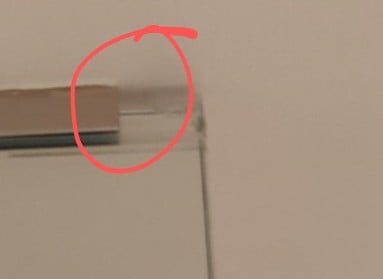

What are your requirements? I liked CalenGoo, I can live with aCalendar and BusinessCalendar.


What are your requirements? I liked CalenGoo, I can live with aCalendar and BusinessCalendar.
Yeah, thanks, that comic was a little too black and white in 50% of the panels - acknowledging women’s rights and their role in society and abolishing child labor doesn’t mean that we did not process the shit out of food and invented the unholiest abominations as substitute for actual nourishment, or that it’s suddenly healthy to live in a concrete block after spending 10 hours in cloned cubicle #7.


I have posted a link in my top comment.


As others have said, it’s a great game with lots of content. The GOG version should work on most systems, but the game will need the unofficial patch - otherwise, there are plenty of bugs left, plus some missing hints, dialog items etc. that will make for a confusing experience.
Unofficial patch: https://terra-arcanum.com/drog/uap.html
This patch now also includes the high resolution patch, along with high resolution town maps and audio. The high res patch is also recommended since it improves compatibility with modern systems.


Yeah, no lubricants and the look / style factor - that was my conclusion as well.
As for maintenance, while a belt might last 3 times as long, that’s not really a factor, given the price difference between belts and chains.


Exactly, which is why I was trying to think of any actual reasons I might want a belt, except style.


Are there any other reasons I’d want this apart from the lack of oil and the decreased noise levels, the coolness factor and the tinkering itself?
Every single one is a valid reason in itself of course, but maybe there is more.
I’ll post some links, but it’s a pretty busy week for me already, so give me some time.
An interrupt is an input that can be triggered to interrupt normal execution. It is used for e. g. hardware devices to signal the processor something has happened that requires timely processing, so that real-time behavior can be achieved (for variable definitions of real-time). Interrupts can also be triggered by software, and this explanation is a gross oversimplification, but that information is what is most likely relevant and interesting for your case at this point.
The commands you posted will sort the interrupts and output the one with the highest count (via head -1), thereby determining the interrupt that gets triggered the most. It will then disable that interrupt via the user-space interface to the ACPI interrupts.
One of the goals of ACPI is to provide a kind of general hardware abstraction without knowing the particular details about each and every hardware device. This is facilitated by offering (among other things), general purpose events - GPEs. One of these GPEs is being triggered a lot, and the processing of that interrupt is what causes your CPU spikes.
The changes you made will not persist after a reboot.
Since this is handled by kworker, you could try and investigate further via the workqueue tools: https://github.com/torvalds/linux/tree/master/tools/workqueue
In general, Linux will detect if excessive GPEs are generated (look for the term “GPE storm” in your kernel log) and stop handling the interrupts by switching to polling. If that happens, or if the interrupts are manually disabled, the system might not react to certain events in a timely manner. What that means for each particular case depends on what the interrupts are being responsible for - hard to tell without additional details.
I’m so in on this conversation.


From the article:
AMD also confirmed the vulnerability and said that the flaw had already been documented and tracked as CVE-2022-23824. It is worth noting that AMD’s advisory includes Zen 3 products as beeing affected, which are not listed in ETH Zurich’s paper.

Oh hey, I just saw you had already posted pretty much the same recommendation I had in mind. I’d personally 3d print an attachment, but your solution is readily available for everyone and cheap. Kudos!

Granite counter tops also rest on a sturdy base, the caulk used to attach them doesn’t have to resist a lot of force trying to push the slab around, the caulk is mostly there to prevent liquids spilling into the cabinets and to provide a decent appearance. Yes, the caulk also somewhat attaches the slab, but keep in mind how hard it is to move to begin with, given the weight of the counter top.
Here, the weight of the glass door pulls the panel out of the rails via the hinges. Silicone won’t provide a lasting solution.

I can only confirm what ballskicker and Shadow said - I’d remove the old caulk both mechanically and with the help of a solvent and then caulk it back in.
However, I’m also pretty sure it will eventually sag again without the help of a retaining mechanism.
Given the pictures you posted (which might not provide the full context), I assume someone really just caulked a glass panel into the profiles and left it at that. I assume you would like to avoid drilling the glass (can be done, but is tricky and has the potential to create a mess pretty quickly), so I’d simply manufacture a retaining cap that closes off the profile and holds the glass panel in place. I’d drill a hole into the ceiling to hold the cap in place, or into the profile, depending on the material and the remaining situation at hand.
I’m talking about mounting that right here, after sliding the glass back in / caulking, of couse:



Ganz so einfach ist es leider nicht. Opt-out loest nicht die Probleme mit Infrastruktur und Facharztmangel.
Ein guter Podcast dazu, inkl. Transkription: https://www.buzzsprout.com/2040953/episodes/12780949-nudge-part-1-a-simple-solution-for-littering-organ-donations-and-climate-change
If I remember correctly, you should be able to just install the GitHub version.
Thank you for exposing me to this. I will now hate you forever.
Oh, please skip it. I watched the first season and I wish I could erase that experience from memory.